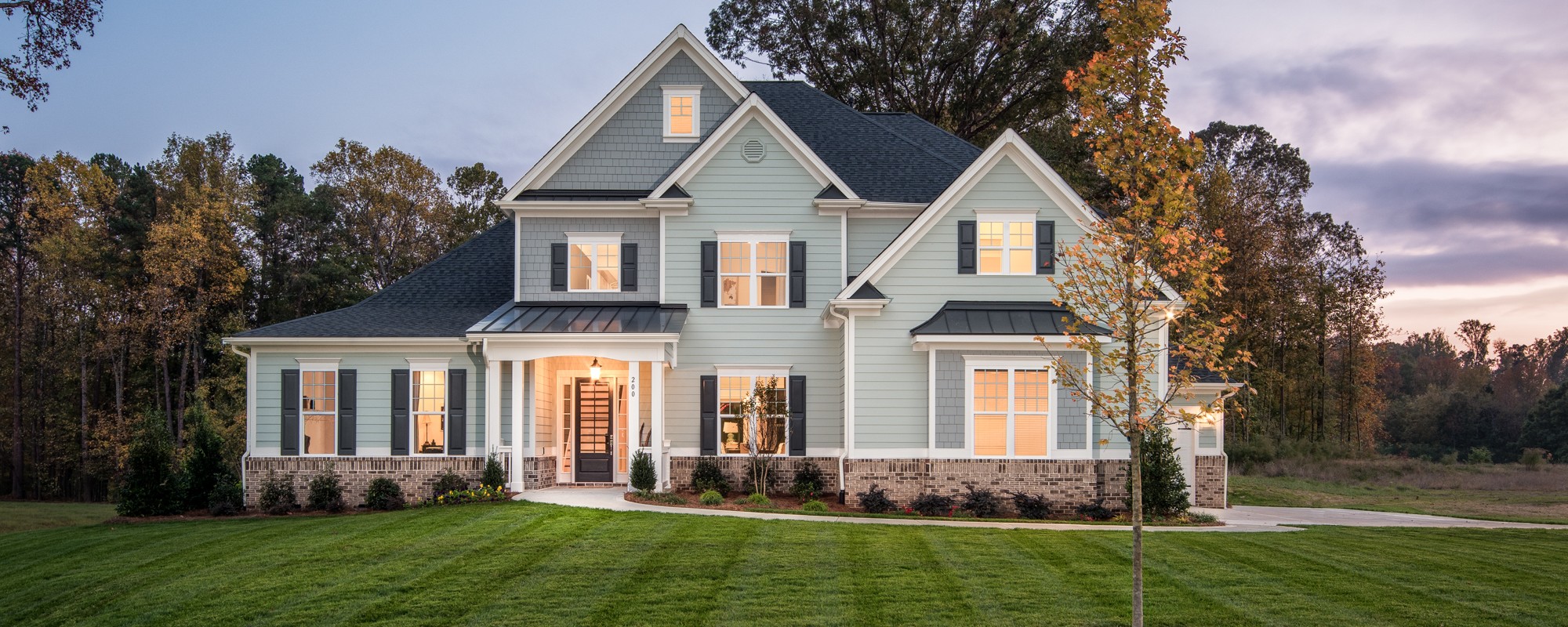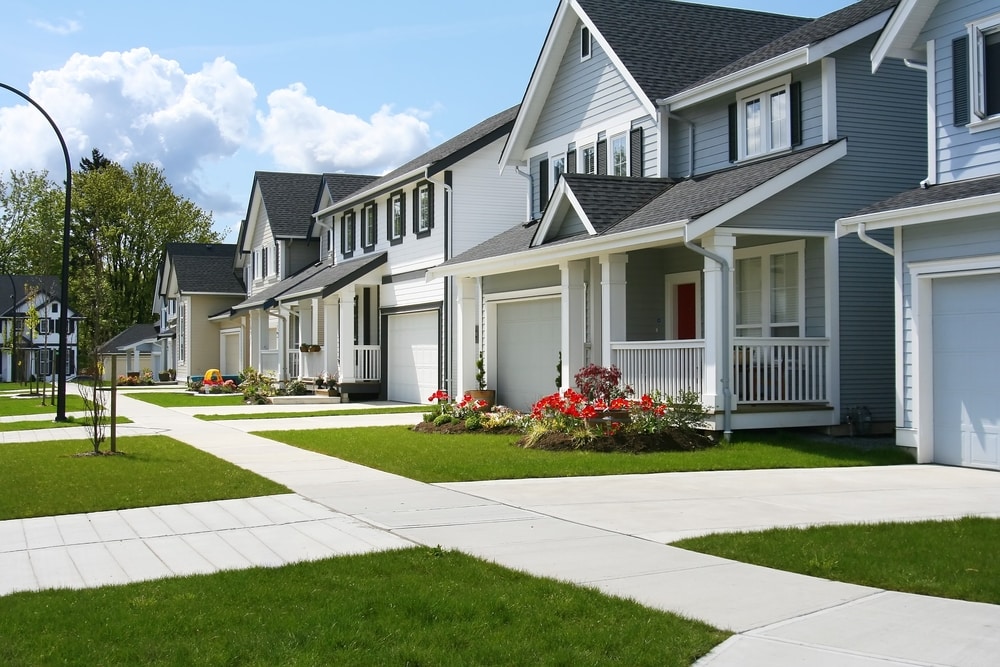Ever wondered why residential homes have sloped roofs? It’s not just about the look. Sloped roofs play a big role in water drainage, keeping our homes dry during heavy rain. But there’s more to it than just dealing with weather. These angled wonders also help reduce energy costs by improving air circulation, making living spaces more comfortable.
Exploring the practical advantages of pitched roofs on homes, this piece uncovers how they not only elevate aesthetics but also fortify against environmental challenges and pave the way for sustainable energy innovations. From enhancing curb appeal to boosting structural integrity and even offering opportunities for green energy solutions like solar panels – we’ve got you covered. As we move forward, you’ll uncover the advantages of sloped over flat roofs, particularly in terms of upkeep and longevity.

Functional Benefits of Sloped Roofs in Residential Homes
Enhanced Water Drainage
Sloped roofs are not just a design choice; they’re a smart one, especially when it comes to handling Mother Nature’s mood swings. With pitched designs, water drains easily, making quick runoff during heavy rain a breeze and keeping water damage at bay. It’s like having an efficient drainage system built right into your home.
Ensuring this feature is present plays a pivotal role in preserving your home’s structural health over the years. Just ask anyone who’s had to deal with leaks and structural damage from poor roof drainage—it’s no picnic.
Improved Air Circulation
The attic space under a sloped roof isn’t just for storing old yearbooks and holiday decorations. This essential space under your sloped roof is key to maintaining a cozy atmosphere at home, facilitating the smooth flow of chilly air across different rooms. Think of it as nature’s way of giving you energy-efficient cooling without cranking up the AC.
This natural ventilation can lead to reduced energy costs—a win-win situation for both your wallet and the environment. Plus, if you’re thinking about going green with solar shingles, sloped roofs offer an ideal angle for installation, enhancing overall energy savings even further.
Architectural and Aesthetic Appeal of Sloped Roofs
Sloped roofs aren’t just a random choice; they’re a design decision that marries form with function. They offer more than just an attractive silhouette against the skyline. When it comes to enhancing a home’s curb appeal, these roofs are hard hitters.
Roofing Styles and Home Design
The variety in roofing styles is vast, but sloped designs stand out for their versatility. Sloped roofs enhance the visual allure of homes, blending seamlessly with everything from sleek contemporary aesthetics to quaint traditional vibes. This adaptability makes them favorites among homeowners aiming for both style and substance.
Beyond looks, sloped roofs provide practical attic space. If you’re envisioning a snug attic for relaxation or seeking additional space to store your treasures, this attribute skillfully enlarges the living space of your abode while preserving its aesthetic allure.
If you’re considering giving your house some love with a new roof or simply want to dive deeper into how different slopes can influence your home’s design check out Campo’s Roof Residential Options and talk to an expert today.
Comparison Between Sloped and Flat Roofs
Suitability for Building Types
The purpose a building serves significantly influences whether a sloped or flat roof is more appropriate. Residential properties often sport sloped roofs because they’re great at making water drain easily, reducing the risk of water damage. On the flip side, commercial buildings go for flat roofs not just because they’re cost-effective but also due to their suitability for housing HVAC units and creating rooftop gardens.
Flat roofs are indeed more common in commercial settings, mainly due to their affordability and practicality in large-scale applications. However, this doesn’t mean they’re low maintenance; these structures require diligent upkeep to prevent issues like leaks or structural wear from UV rays exposure.
Maintenance-wise, sloped roofs have an edge since their design minimizes standing water risks significantly during heavy rainfalls—making them less prone to leaks compared with flat roofing options. Moreover, the added attic space under pitched roofs offers extra insulation which can help keep energy costs down—a win for any homeowner looking to save on heating and cooling bills.
Maintenance and Durability Concerns with Sloped Roofs
When it comes to choosing a roof, homeowners often lean towards sloped roofs for their durability against extreme weather. But why exactly do these pitched beauties hold up better? It’s all about the design that lets heavy rain slide right off, preventing water from pooling and causing damage.
This natural defense means sloped roofs generally see less frequent repairs compared to their flat counterparts. Proper maintenance can extend the life of a sloped roof even further, ensuring your home stays safe and dry through seasons of harsh weather without structural damage taking its toll.
Embracing a sloped roof not only boosts your home’s visual charm but also gifts you tranquility, with the assurance of facing fewer unexpected repair demands post-storm. With routine checks and minor upkeep, your rooftop warrior stands ready to defend against whatever Mother Nature throws its way.
Energy Efficiency Advantages of Sloping Roofs
Sloping roofs aren’t just a design choice; they’re a smart energy-saving strategy. The attic space these roofs provide can significantly reduce energy costs by enhancing air circulation throughout the house, keeping it cooler in summer and warmer in winter.
Solar Shingle Installation Ease
The angle of sloping roofs is perfect for solar shingle placement, offering an ideal surface area to catch those sun rays. This isn’t just good news for your wallet but also for the planet as it leads to increased energy savings. Dive deeper into the subject by exploring Campo Roof’s solar shingles.
Moreover, with better air circulation under such roofing styles, there’s less need for artificial cooling or heating systems inside your home. This natural ventilation mechanism contributes not only to comfortable living conditions but also helps keep those dreaded utility bills at bay.

FAQs in Relation to “Why Do Residential Homes Have Sloped Roofs?”
Why do residential houses have sloped roofs?
Sloped roofs let rain and snow slide off easily, preventing water damage. They’re a smart choice for weather protection.
Why don’t residential homes have flat roofs?
Flat roofs struggle with drainage and require more upkeep. In areas with heavy rainfall or snow, they just aren’t practical.
Why do roofs need to be sloped?
To fight water pooling and leakage, slopes ensure quick runoff. This design keeps the structure safe from moisture damage.
Why do houses in America have slanting roofs?
America’s diverse climate means lots of rain and snow. Slanting roofs tackle these challenges head-on by promoting efficient drainage.
Conclusion
Now you know why residential homes have sloped roofs. The reason behind the design goes beyond aesthetics, focusing on practicality and optimizing performance.
By tilting, roofs enable swift water runoff, shielding your abode from the ravages of torrential downpours. By enhancing airflow, they naturally reduce the temperature inside your home.
They’re not just practical; they add to your home’s curb appeal too. Various inclines complement diverse designs, enhancing not only the visual charm but also the operational efficacy of a structure.
While flat roofs may cost less upfront for commercial buildings, sloped roofs offer lower maintenance costs over time for homes.
Keep in mind, that opting for a sloped roof isn’t merely picking an option—it’s committing to long-term resilience, improved energy conservation, and enhancing the visual appeal of your home.
Need a new roof? Unsure? Campo Roof can help! Get a FREE estimate here.



